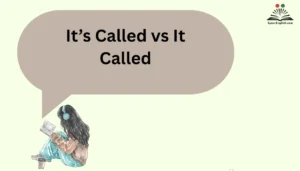Prepositions may look deceptively simple, just short, little, words like at, in, on, or to, forming layers of meaning that shape every sentence. The topic At the House vs In the House shows how even small choices affect clarity—each phrase reflects context, location, and emphasis differently.
When I first noticed how learners and native speakers often say both as if they’re correct, I realized how English hides subtle nuanced meanings beneath the surface. At a quick glance, “at the house” seems as valid as “in the house,” yet in reality, their usage and meanings differ, shaped by situation and intention.
Over years of teaching, I’ve seen that choosing the right expression depends on what one wants to emphasize. For instance, when someone says “at the house,” it usually highlights the location as a point or setting—you’re focusing on where something happens. On the other hand, “in the house” draws attention to being inside the space itself. This article breaks these distinctions down using examples, tables, and case studies, helping learners gain confidence without a moment’s hesitate.
Understanding Prepositions in American English
Prepositions are words that link nouns and pronouns to other words in a sentence. They often describe location, direction, or time. For example:
- Location: She is at the park.
- Direction: He walked into the room.
- Time: We’ll meet at 3 PM.
Here’s the tricky part: prepositions don’t always follow strict rules. They depend heavily on nuance, perspective, and convention. That’s why “at the house” and “in the house” both exist but aren’t interchangeable.
In American English, prepositions often reflect how close or specific you want to be.
- At → suggests a general point or location.
- In → suggests being inside a physical boundary.
The Meaning of “At the House”
When you use “at the house,” you’re talking about a general location. It doesn’t necessarily mean you’re inside—it just places you somewhere in relation to the house.
Common Uses of “At the House”
- Meeting or visiting:
“I’ll see you at the house later.” - General reference without detail
“She’s at the house with the kids.” - Nearby presence:
“There’s a car parked at the house.”
Idiomatic Usage
In everyday American speech, “at the house” sounds natural when you don’t need to specify whether someone is inside or outside. It’s less about the structure and more about the spot.
Quote: As linguist Paul Brians notes, “At specifies a point of contact or reference, not enclosure.”
The Meaning of “In the House”
By contrast, “in the house” is precise. It means you are inside the physical structure of the house.
Common Uses of “In the House”
- Physical presence indoors:
“He’s in the house watching TV.” - Contrast with being outside
“The kids are playing in the house, not in the yard.” - Cultural phrases:
- In politics: “The bill is being debated in the House of Representatives.”
- In entertainment: “DJ Khaled is in the house!” (meaning present, with energy)
Figurative Usage
“In the house” is also common in pop culture to mean presence or participation. In sports commentary, announcers might say:
“LeBron James is in the house tonight!”
Here, the phrase goes beyond location—it signals excitement and authority.
Side-by-Side Comparison: “At the House” vs “In the House”
To make this crystal clear, here’s a direct comparison table:
| Phrase | Meaning | Example | Best Use Case |
| At the house | Refers to a general location, not specifying inside or outside | “I’ll meet you at the house.” | When you mean the property in general |
| In the house | Refers to being inside the structure | “The dog is in the house.” | When emphasizing indoors or enclosed space |
Quick tip: Use “at” when you want to stay vague or emphasize the place as a point. Use “in” when you want to highlight being inside.
Location Nuances: General vs Specific
The distinction between at and in often comes down to scope of reference.
- At = general area
- In = inside boundaries
Think of it like zooming in and out on Google Maps:
- Zoomed out → at the house (a pin on the map).
- Zoomed in → in the house (inside the walls).
Analogies
- Airport example:
- “I’m at the airport.” (general—could be inside, outside, or near).
- “I’m in the airport.” (specifically inside the building).
- Restaurant example:
- “We’re at the restaurant.” (the location in general).
- “We’re in the restaurant.” (seated inside, not on the patio or in the parking lot).
Cultural and Media References
Language doesn’t just live in grammar books—it lives in culture. Both “at the house” and “in the house” show up in American media and everyday speech.
Literature
Writers oftenchoose “in the house” when describing detailed scenes:
“There was music in the house, laughter spilling through the open windows.”
Meanwhile, “at the house” can set a broader stage:
“They gathered at the house before setting off on their journey.”
Media and Pop Culture
- Hip-hop and music: “So-and-so is in the house!”
- Sports: Commentators announcing celebrity appearances with the same phrase.
- TV shows: Characters casually say, “Meet me at the house.”
These examples reinforce how context shapes the choice of preposition.
How to Choose the Right Phrase in Real Life
Here’s a simple decision guide you can follow:
- Use “at the house” when:
- Referring generally to the location.
- Talking about meeting or visiting.
- The exact position doesn’t matter.
- Use “in the house” when:
Referring to the physical interior. - Contrasting indoors vs outdoors.
- Adding cultural emphasis (music, sports, entertainment).
Common Mistakes to Avoid
Many learners (and even native speakers when rushed) misuse these prepositions. Here are the big pitfalls:
- Mistake: Saying “I’m in the house” when you mean near or around it.
- ✅ Correct: “I’m at the house.”
- Mistake: Saying “I’m at the house” when you want to stress being indoors.
- ✅ Correct: “I’m in the house.”
- Mistake: Overgeneralizing. Thinking at always means outside.
- Reality: At is about reference, not position.
Case Study Example:
A real estate agent might say:
- “I’ll meet you at the house at 3 PM” (outside or general).
- Then walk a client in the house to show the property (inside).
Conclusion
Understanding the difference between At the House vs In the House highlights how tiny prepositions can change the entire meaning of a sentence. While “at the house” focuses on location as a point of reference, “in the house” brings attention to being inside the space. Both expressions are correct, but their usage depends on context and what you want to emphasize. Over time, learners realize that these short and simple words, though deceptively small, carry layers of meaning that shape everyday communication.
As a language enthusiast and teacher, I’ve found that true fluency comes when you start hearing the subtle rhythm of prepositions. These little words—whether in, on, at, or to—connect thoughts, build precision, and make conversation flow naturally. Understanding them doesn’t just make your grammar better; it makes your communication more natural, confident, and expressive. So, the next time you hesitate between saying “at the house” or “in the house,” remember that both belong in English—but your choice tells a different story.
FAQs
What is the main difference between “at the house” and “in the house”?
At the house” refers to being near or around the location, while “in the house” means being inside the building.
Can both phrases be correct in a sentence?
Yes, both are correct but depend on the context and the focus of the sentence.
Why are prepositions tricky to learn?
Because their meanings change based on context, making them subtle and nuanced.
Are there rules for using “at,” “in,” and “on”?
Yes, but they vary depending on the situation and what you want to emphasize.
How can I improve my understanding of prepositions?
Practice with examples, listen to native speakers, and read frequently.
Does “at the house” mean the same as “home”?
Not always; “home” is more personal, while “at the house” is more location-based.
Which is more formal, “at the house” or “in the house”?
Both are neutral, but “in the house” can sound slightly more specific.
Why do native speakers use these naturally?
They learn patterns through immersion rather than memorizing rules.
Can I use these prepositions for other buildings?
Yes, such as “at the school” or “in the school,” with similar distinctions.
How can teachers explain this easily to learners?
By using visuals, real-life examples, and practice sentences for clarity.


